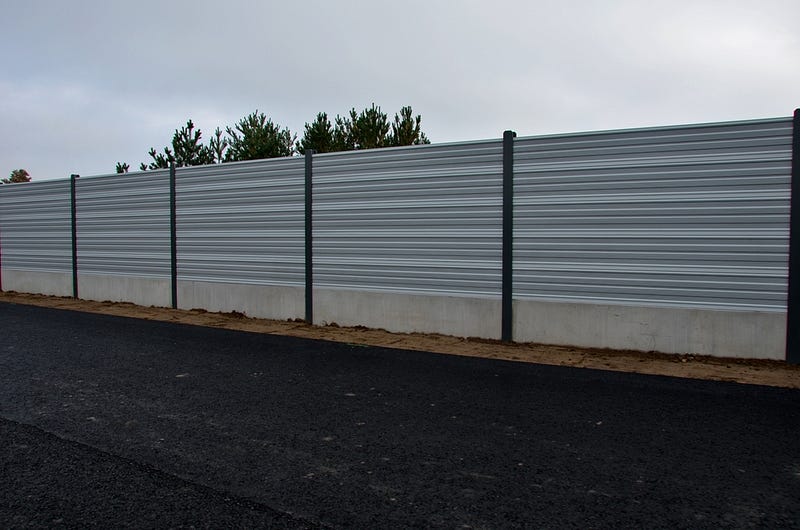How Innovative Solutions and Policies Can Mitigate Noise Pollution
Written on
Chapter 1: Understanding Noise Pollution
Noise pollution is a significant health concern that can lead to various ailments (Image credit: Siberian Art on Shutterstock).
This content is derived from the scientific article “The Noise Pollution Problem: A Review of Current Research and Future Directions” by Dr. Somnath Choubey (Full citation and link available at the end of the article).
Following the quieter periods during the COVID-19 pandemic, many individuals have returned to their bustling routines, resulting in a resurgence of noise. When these sounds become harmful or bothersome, they transform into noise pollution.
The primary sources of noise pollution can be categorized into three groups:
- Industrial Sources: Factories, construction sites, and power plants utilize heavy machinery, generating excessive noise levels.
- Transportation Sources: This includes noise from airplanes, ships, and all forms of road traffic, attributed to engines, brakes, and horns.
- Human Sources: Everyday activities, ranging from concerts to household devices, contribute to noise pollution.
Natural events like storms and waterfalls can also add to noise levels.
While complete silence can be uncomfortable, excessive noise poses serious health risks, particularly when it becomes a chronic issue.
The long-term health effects of ongoing noise pollution include:
- Hearing Loss: Prolonged exposure can damage the inner ear, leading to permanent hearing issues such as tinnitus.
- Cardiovascular Problems: Increased noise levels can elevate blood pressure and heart rate, heightening the risk of heart disease and stroke.
- Sleep Disturbances: Noise can disrupt sleep patterns, leading to insomnia and frequent awakenings.
- Hormonal Changes: Chronic noise exposure may trigger hormonal imbalances, which can contribute to conditions like diabetes and obesity.
- Mental Health Challenges: Increased noise is linked to higher levels of stress, anxiety, and depression, particularly in vulnerable populations.
- Cognitive Impairment: Noise can hinder focus, memory, and learning abilities.
- Communication Barriers: Elevated noise levels can complicate social interactions and lead to isolation.
- Decreased Property Values: Areas plagued by noise pollution often see a drop in real estate value due to buyer reluctance.
Collectively, the consequences of noise pollution result in a loss of over a million healthy years annually for residents in Western Europe.
Given its impact on quality of life and social well-being, mitigating noise pollution is essential. Monitoring noise sources and levels is critical for informing effective solutions.
Chapter 2: Strategies to Mitigate Noise Pollution
Technological Innovations
The first approach to combat noise pollution involves utilizing sound-reducing technologies. These innovations help minimize the amount of noise that reaches individuals.
For instance, in transportation, transitioning to electric and hybrid vehicles can significantly reduce noise. Additionally, using quieter pavement materials and constructing noise barriers can dramatically lower sound levels. In this video, you can hear the difference between asphalt and concrete:
Another method is to implement sound-absorbing technologies, such as foam wall panels and transparent soundproof windows, which can diminish noise from busy streets. Check out this video showcasing these windows (1:04–1:22):
Furthermore, sound-cancelling technologies generate opposing sound waves to neutralize background noise. This video explains how noise-canceling headphones operate:
Public Policies
The second approach to addressing noise pollution involves the establishment of public policies aimed at regulating noise levels. Governments can implement these policies at various levels, from local to national.
Effective public policies may include:
Noise Zoning: Designating specific regions, like residential areas, as quiet zones while permitting more noise in commercial or industrial zones.
- Noise Level Regulations: Setting maximum allowable noise levels for sources such as factories and airports.
- Promoting Quieter Transportation: Encouraging the use of electric vehicles.
- Public Education: Raising awareness about noise pollution's health effects and promoting noise reduction strategies.
- Urban Planning: Integrating noise reduction measures, such as green spaces and quiet zones, into city designs.
- Building Noise Barriers: Supporting the construction of barriers that mitigate noise levels.

In conclusion, both innovative technologies and strategic public policies can significantly reduce noise pollution.
What You Can Do
Here are some actionable steps you can take to help mitigate noise pollution:
- Reduce personal noise levels by lowering volumes on music or television.
- Schedule noisy activities during the day.
- Educate others about the health impacts of excessive noise.
- Share personal experiences related to noise pollution.
- Consider noise as a potential contributor to health issues.
- Avoid adding to the noise pollution, such as minimizing car noise.
- Invest in quieter equipment.
- Use public transportation to decrease traffic noise.
- Comply with local noise regulations.
Credit:
This article is based on “Choubey, S. The Noise Pollution Problem: A Review of Current Research and Future Directions.”